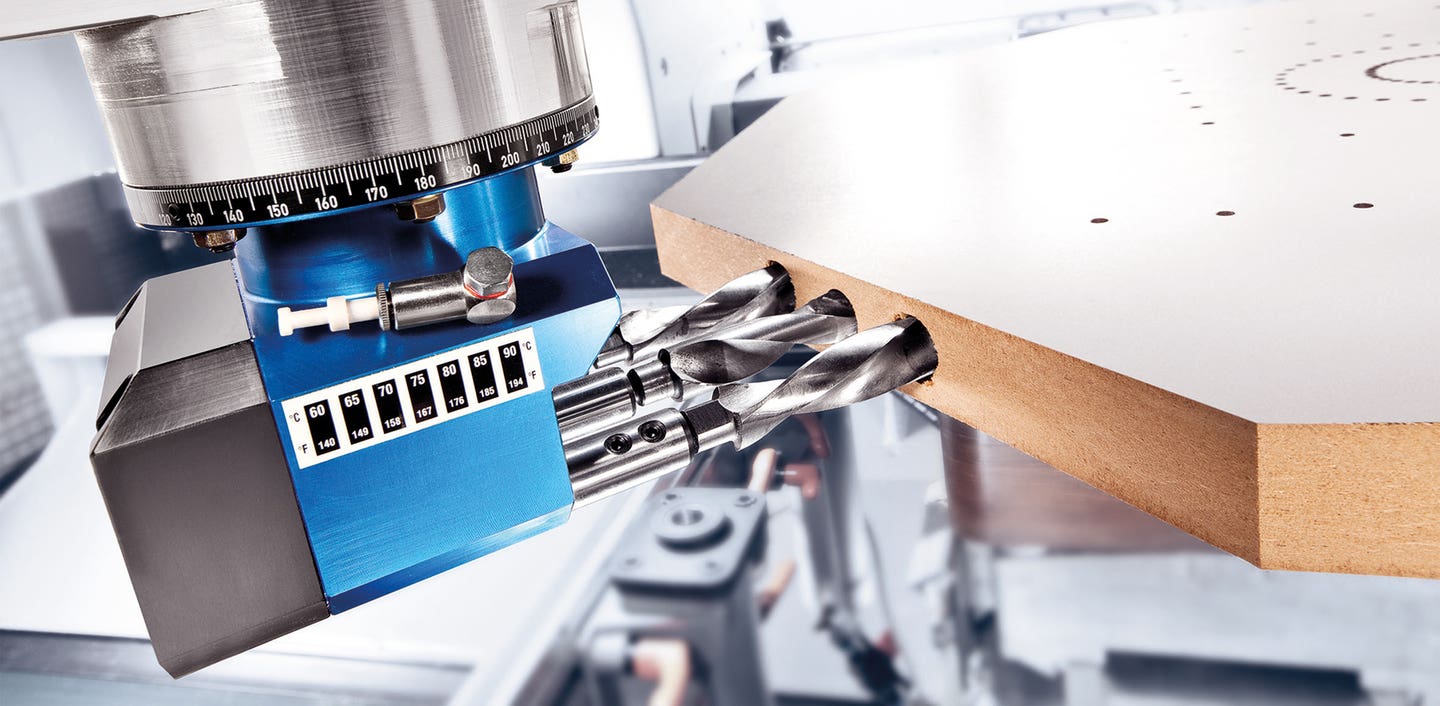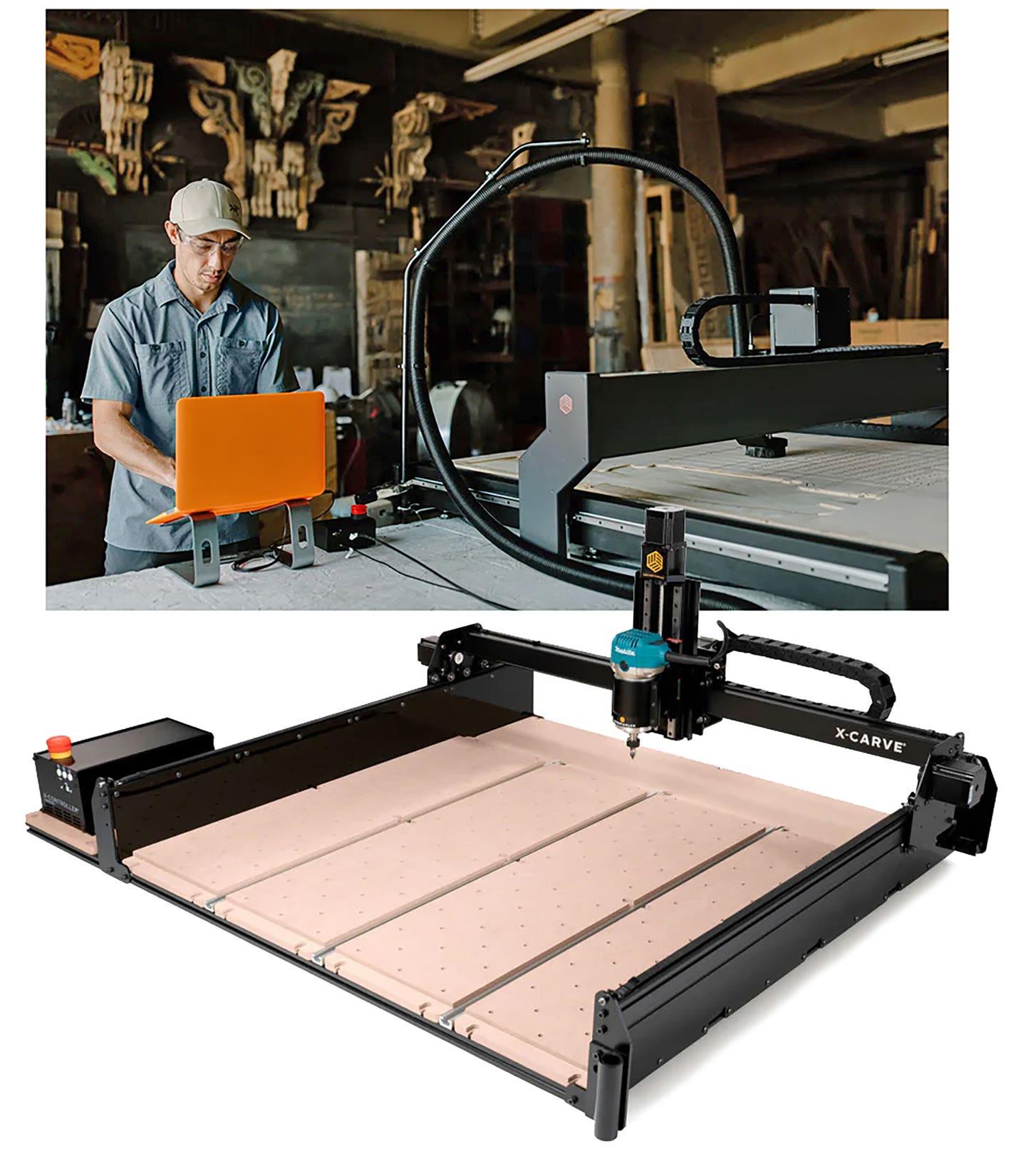Getting the right fit
Joinery options for woodshops often come down to a choice between convenience and aesthetics
A dictionary search for the word ‘joiner’ reveals that in England it still refers to somebody who builds complex objects by joining pieces of wood together. In America, it’s “someone who joins many organizations”.
Most of the familiar joints in furniture and casework originated in boatbuilding, where wooden parts needed to stay together during constant motion and radically changing humidity. Traditional joinery includes the mortise and tenon, where the tenon can be pinned or wedged; tongue and groove joints such as those in five-part door and panel construction; and butt and lap joints, where end grain and cross lamination can present gluing problems. Casework joints evolved after the introduction of plywood and table saws and include dadoes (across the grain), grooves (with the grain) and rabbets or rebates (depending on where you live). Splined joinery can belong in this category too, as many furniture builders use thin plywood splines in grooves for strength. Plywood won’t split along the grain as a solid wood spline might. And when it comes to drawer boxes, the epitome of style is still the half or through dovetail, or sometimes an elegantly executed box or finger joint.
Over the years, the industry has built upon these basics and introduced biscuits and pocket screws to overcome some of the challenges of butt joinery. Biscuits offer vertical alignment where, for example, the faces of two boards can meet in the same plane. However, they are not quite as reliable when it comes to lateral alignment – parts can slide a little sideways during a glue-up. Pocket screws are strong, fast, and often don’t require glue, but they do leave a large hole. It can be somewhat disguised but is perhaps best located in hidden areas such as the backs of cabinet face frames.
In production shops, joint making is all about hardware. That’s because a CNC router can drill a hole for a metal or plastic connector a lot faster than it can mill the complex facets of, say, a wedged tenon. Virtually all mechanical connectors are hidden, while pure joinery such as dovetailing or through tenons is often revealed and celebrated as a mark of craftsmanship. Indeed, the options for woodshops often come down to a choice between convenience and aesthetics. Both hand-cut joinery and mechanical connectors can offer strong and dependable joints, so the real constraints here are speed and looks. If the joint is to be separable (as in knock-down), then you’re pretty much looking at hardware options.
In small- and medium-sized woodshops, creating joinery such as mortises and dovetails has become a lot easier and more repeatable over the last few years with machines such as the Shaper Origin and PantoRouter.
The Shaper Origin ($2,599 at shapertools.com) is a hand-held CNC router. The woodworker applies a special tape to the workpiece and the router uses that to locate itself. Then the operator manually follows the cutting line, and the router moves inside its housing to make minor corrections and deliver perfect free-hand results. The company also offers a stationary bench/clamping table called the Workbench that makes it quite easy to create dovetails, mortises, and other fine joinery. One doesn’t need a degree in computer programing to run it.
The PantoRouter (pantorouter.com, starting at $1,395) is a manual horizontal routing system that was designed to semi-automate joint making for smaller shops. It’s both a prototyping and short-run production workhorse that can create tenons, dovetails, drilling patterns or free-hand contours, among other options. The machine operates in all three axes and brings accurate repeatability to shops that don’t own a large CNC. Basically, it’s a router that is on its side and mills wood that is locked onto a moving table. The operator can control that movement with handles, stops, and templates that deliver very precise results.
Woodpeckers’ Multi-Router (woodpeck.com) works on a similar principle. There are differences, of course. This is a new generation of the venerable JDS Multi-Router, and after Woodpeckers bought the rights, they added some upgrades such as better dust collection and a sturdier motor mount. It has also re-engineered the stylus, according to Darrel Peart (furnituremaker.com) who has been using a Multi-Router for many years to build his exquisite Arts & Crafts style furniture.
Another inspirational woodworker who is also a renowned toolmaker, John Economaki designed the Jointmaker Pro. Available through Bridge City Tools (bridgecitytools.com), this unusual joinery machine uses a stationary hand saw and moving tables to make controlled cuts. The newest release, the V2, was listed in December 2021 at $859.
The Festool Domino joining system uses loose tenons to make furniture joints. It consists of a machine that drills a mortise in each of the two parts to be joined, and prefabricated beech and sipo tenons. The tool has simple indexing features and adjustable mortise sizing. The tenons are rotation-proof and far stronger than either biscuits or dowels. They have a large gluing surface area for extra strength. There’s an optional trim and cross stop, and mortise width adjustment with the turn of a dial allows for easier alignment when joining panels. A pivoting fence can be used to create angled mortises from 0-90 degrees with positive stops at 22.5, 45 and 67.5. The company (festoolusa.com) also offers indexing pins for quick alignment against the edge of the workpiece for accurate placement.
Leigh Industries (leightools.com) is familiar because of its wonderfully engineered dovetail jigs, but the company also makes an impressive mortise and tenon jig. The FMT Pro ($1,299 at Rockler) makes both the mortise and matching tenon with a single setup, guide and bit. It can rout 68 sizes of standard inch joints from 1/16” x 1/8” up to 1/2” x 5”, using 21 standard guides and just one or two Leigh bits. Custom joint sizes up to 1/2” x 5” can also be achieved.
Another option for production mortising is the Horizontal Mortiser FD 250 from Felder Group (felder-group.com). This slot mortising machine has a small footprint but the ability to handle large workpieces. The table is extendable in three directions by up to 39” without any tools, and the drilling motor is mounted on roller bearings so it can create custom-sized mortises. The machine offers comfortable one-handed lever operation and a heavy-duty eccentric clamp that’s usable on the left- or right-hand side. The fence has four locking points on the drilling table and there’s an optional dowel indexing system and mortising chisel device.
A smaller and extremely affordable version of these mortising and floating tenon solutions is the Beadlock system from Rockler (rockler.com). Here, a woodworker can use a simple jig and a drill bit to create the mortise, and the company supplies tenon stock that looks like three 1/2” dowels or five 1/4” dowels that are edge-glued and stuck together. The new Beadlock Pro 3/8” jig runs $89.99.
Since 1987, Incra Precision Tools (incra.com) has offered woodworkers devices that add a high degree of precision to joinery, and among the company’s newer jigs is the Incra I-Box. This is especially useful for drawer joints because it works on either the table saw or a router table to create box or finger joints. It’s both fast and easy to use, and it comes with a one-hour instructional DVD that covers everything from basic setup to advanced decorative joinery. The IBox’s dual pitch lead screw mechanics let a woodworker micro-adjust the joint tightness, and the jig provide a 1/8” to 3/4” range of pin widths. It’s capable of making box joints using any width cutter within that range in lumber from 1/4” to 7/8” thick. The I-Box is made in the U.S.A. by Taylor Design Group.
For shops that already own a CNC or are thinking about investing in one, Laguna Tools has a short but quite informative article on its website titled “Solid wood joinery using a CNC machine” (lagunatools.com).
Digital Wood Carver (digitalwoodcarver.com) offers an accessory for one of their small CNCs which is called the Joint Maker Jig. It gives a user the ability to carve off the end of the DWC2440 machine to mill precision joints on a board while it is secured in a vertical or horizontal position. Those include mortise and tenon, half-blind and through dovetails, finger joints and some unique decorative options.
Woodworkers with some time to spare can visit woodgears.ca to see a large selection of shop-made jigs for all kinds of joinery. Just don’t go there if you have work to do because minutes can become hours.
This article was originally published in the February 2022 issue.







